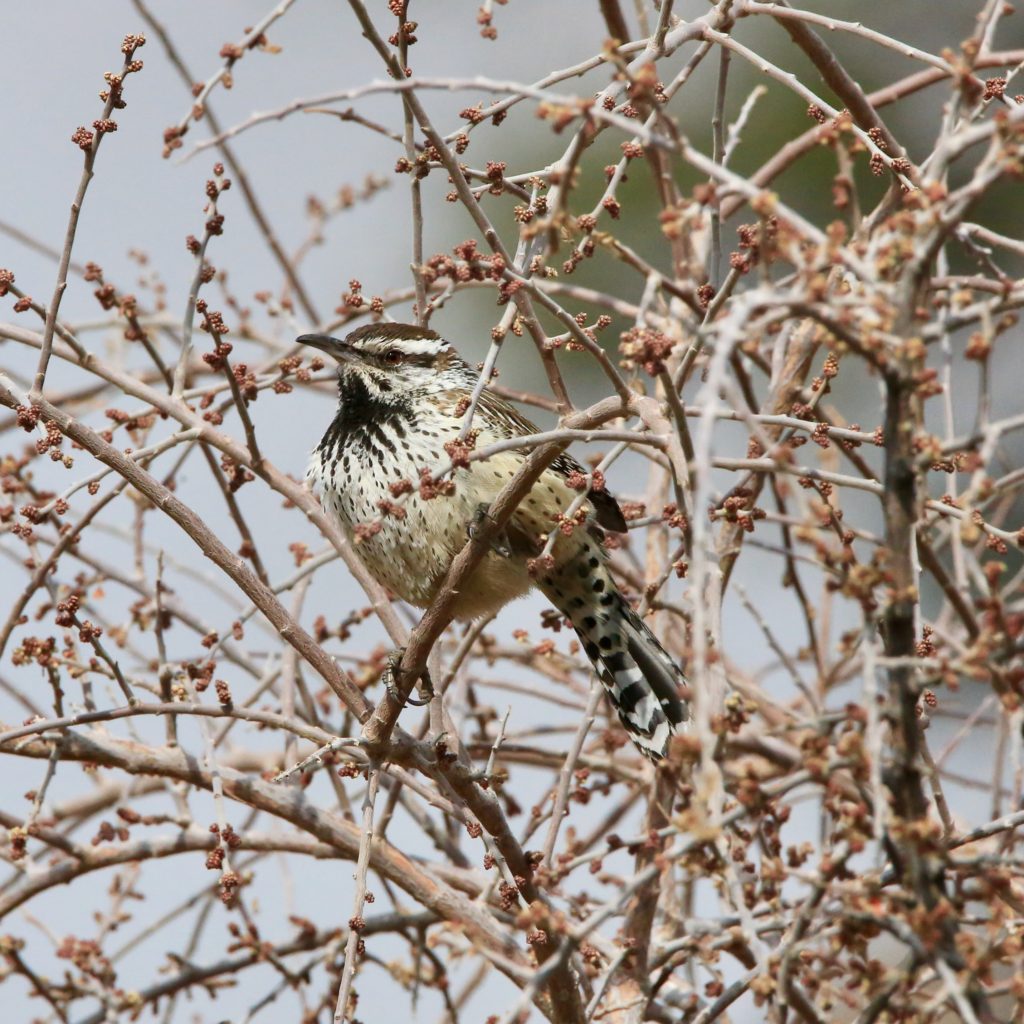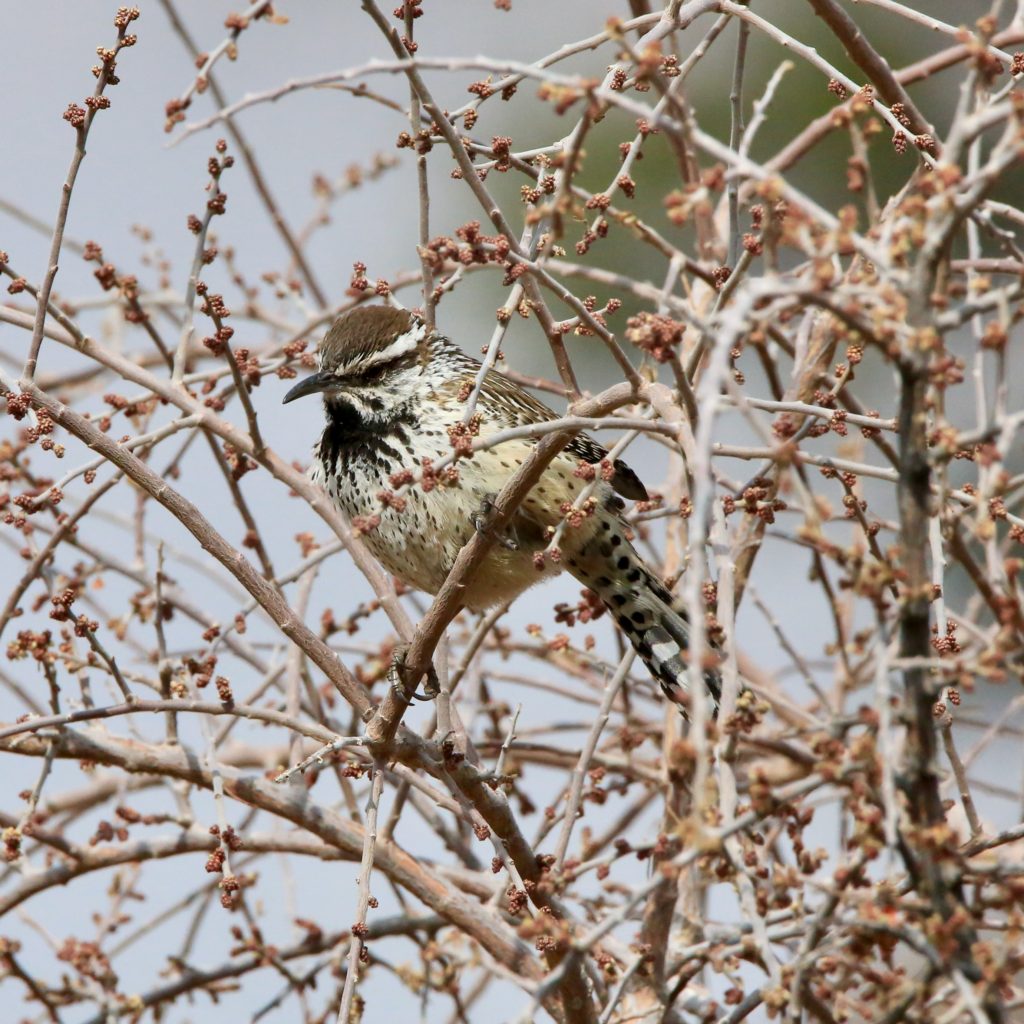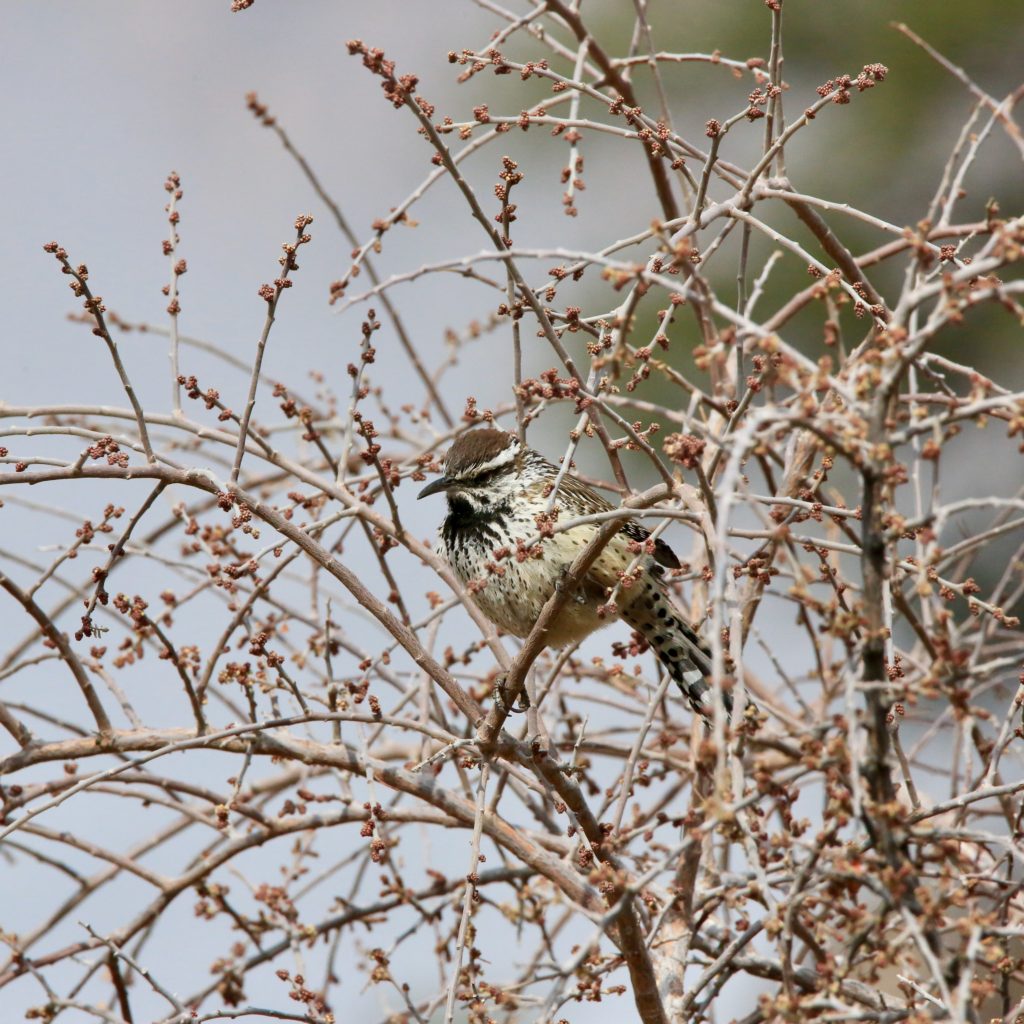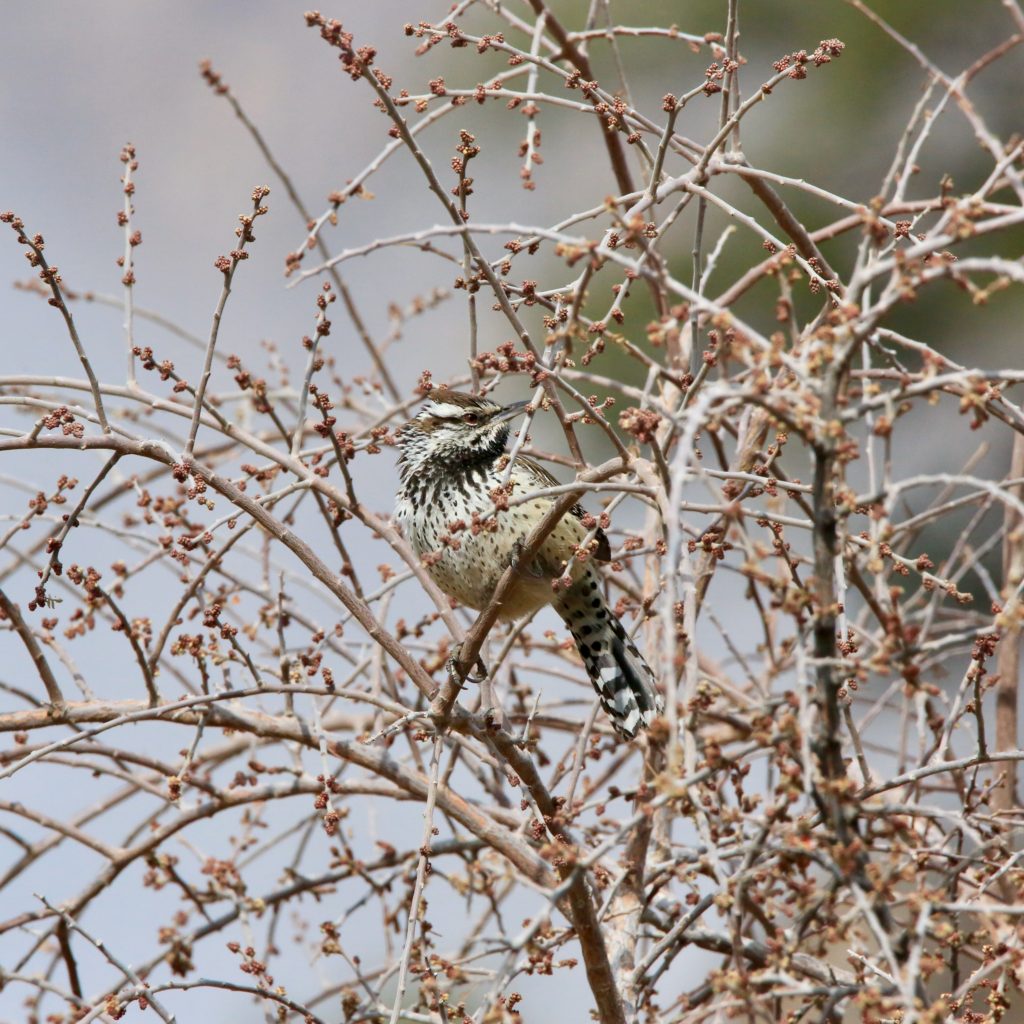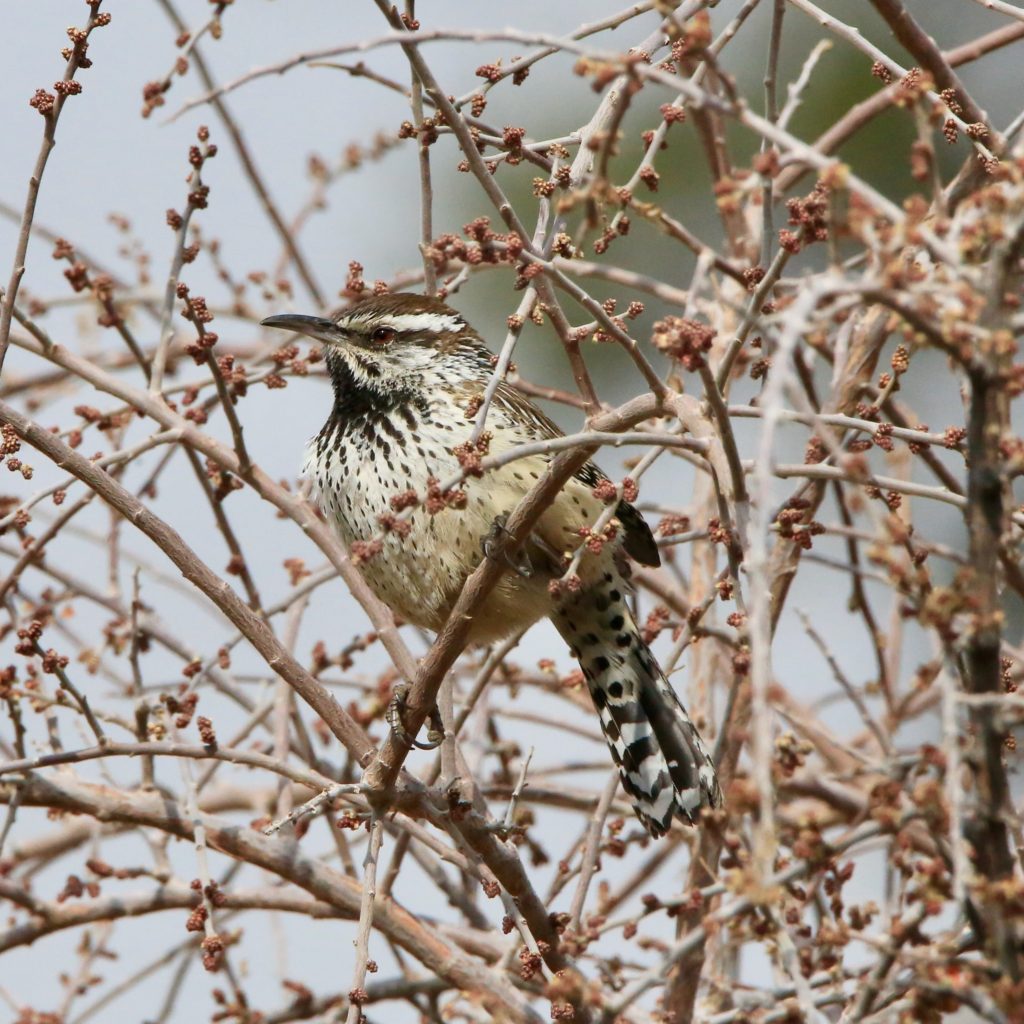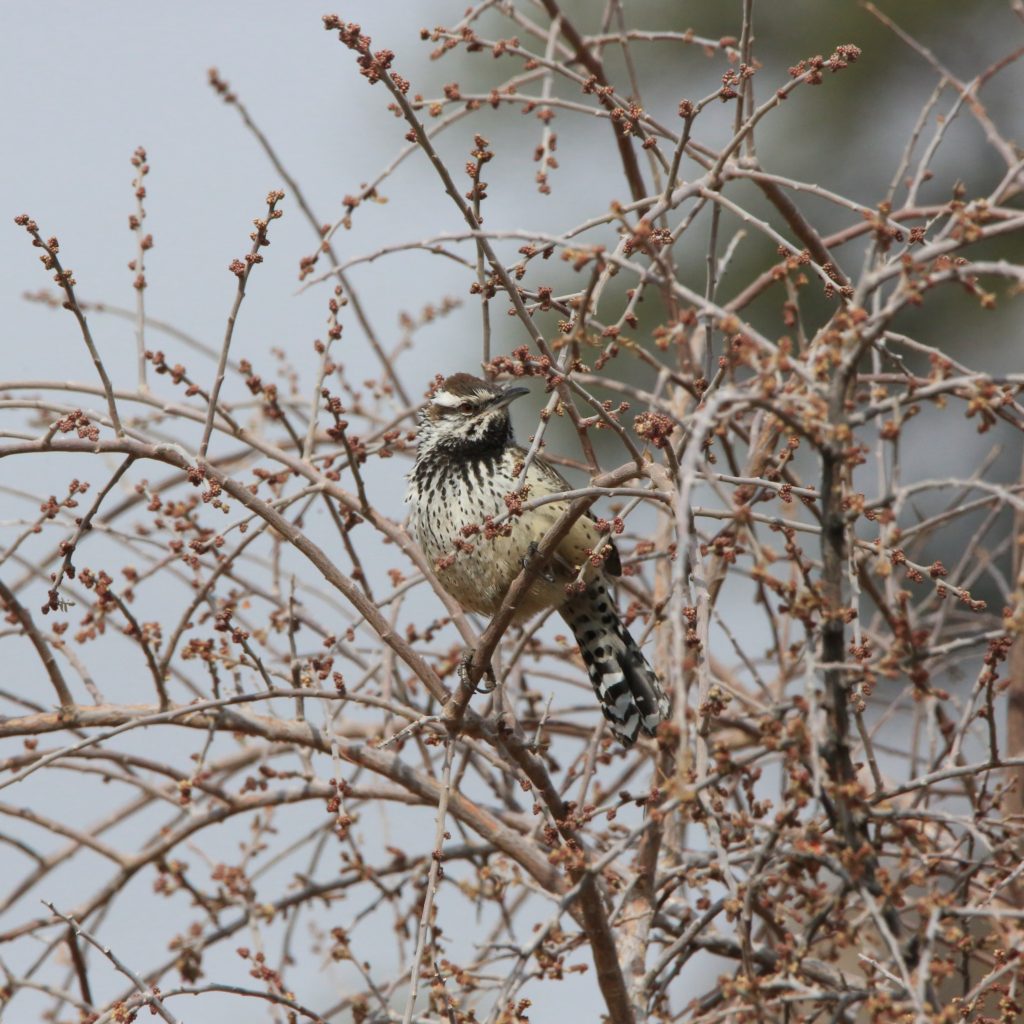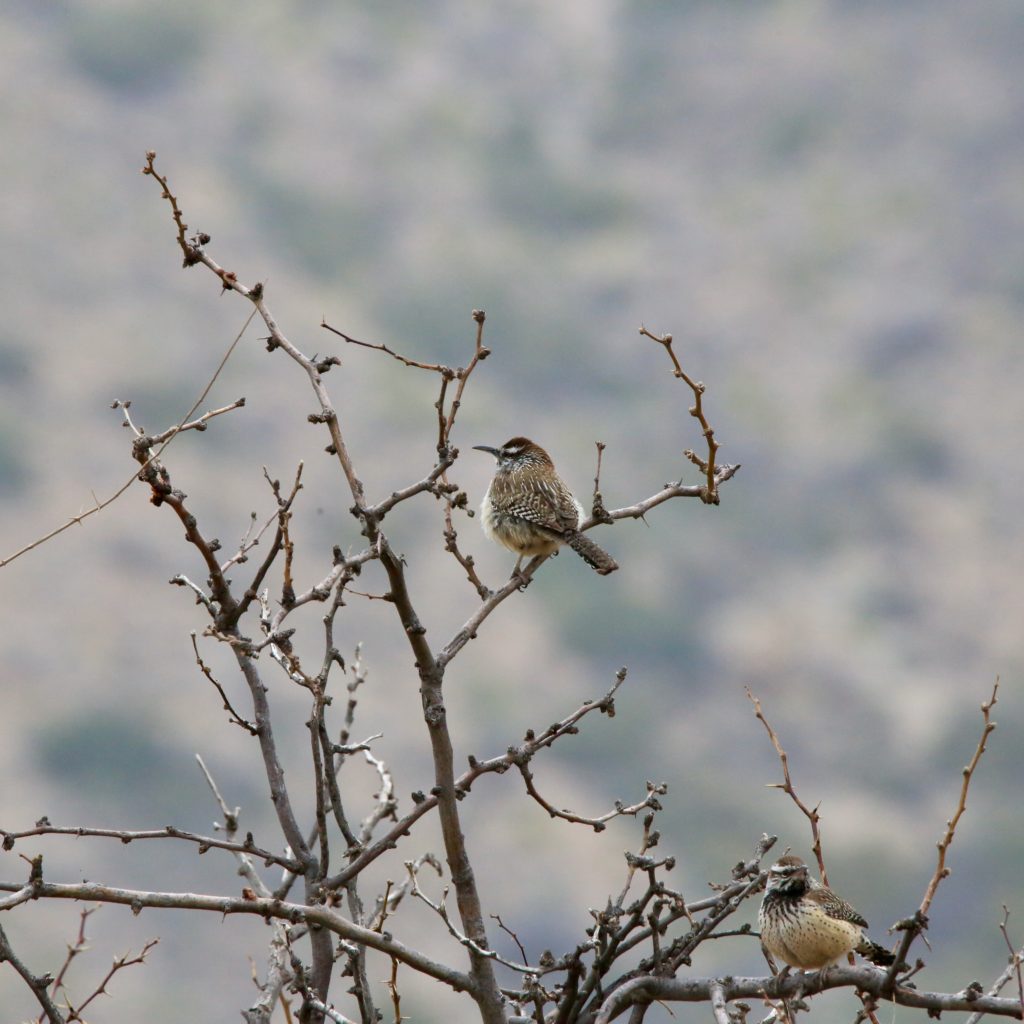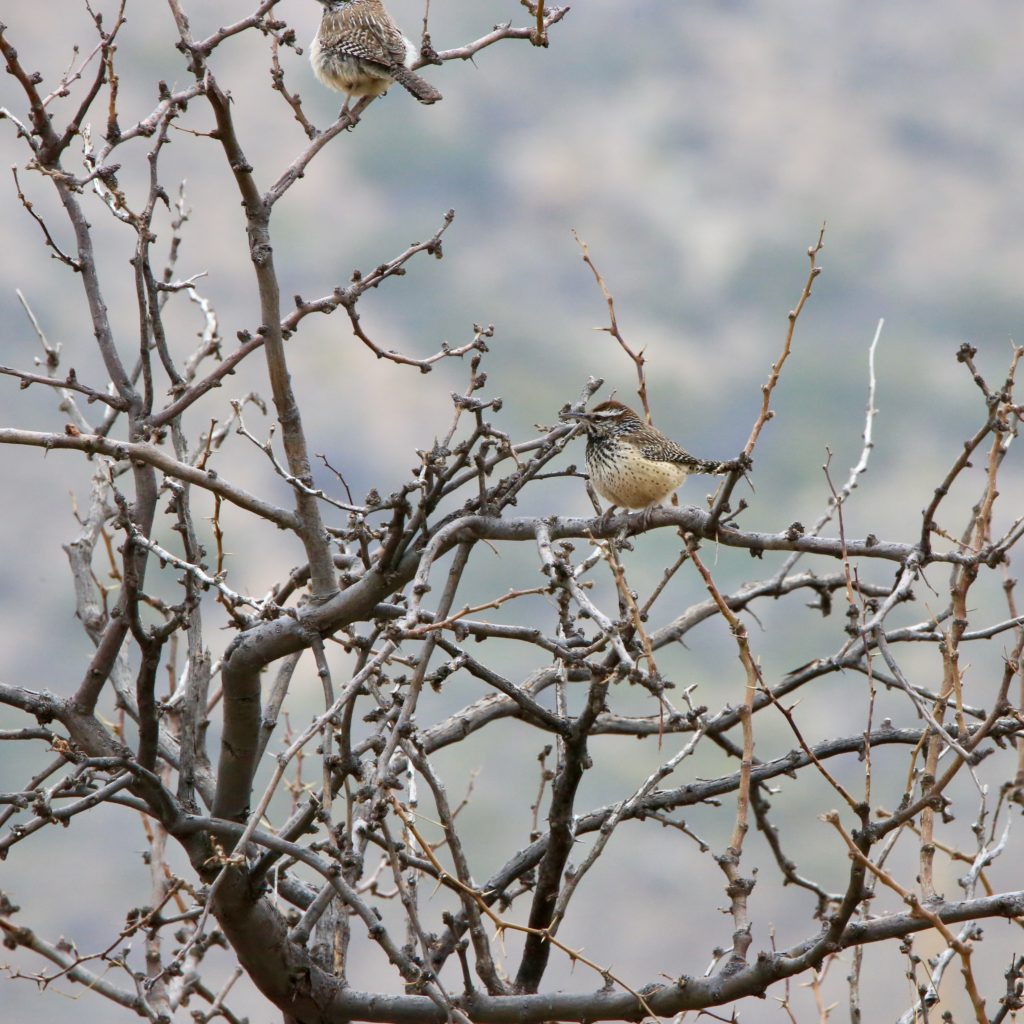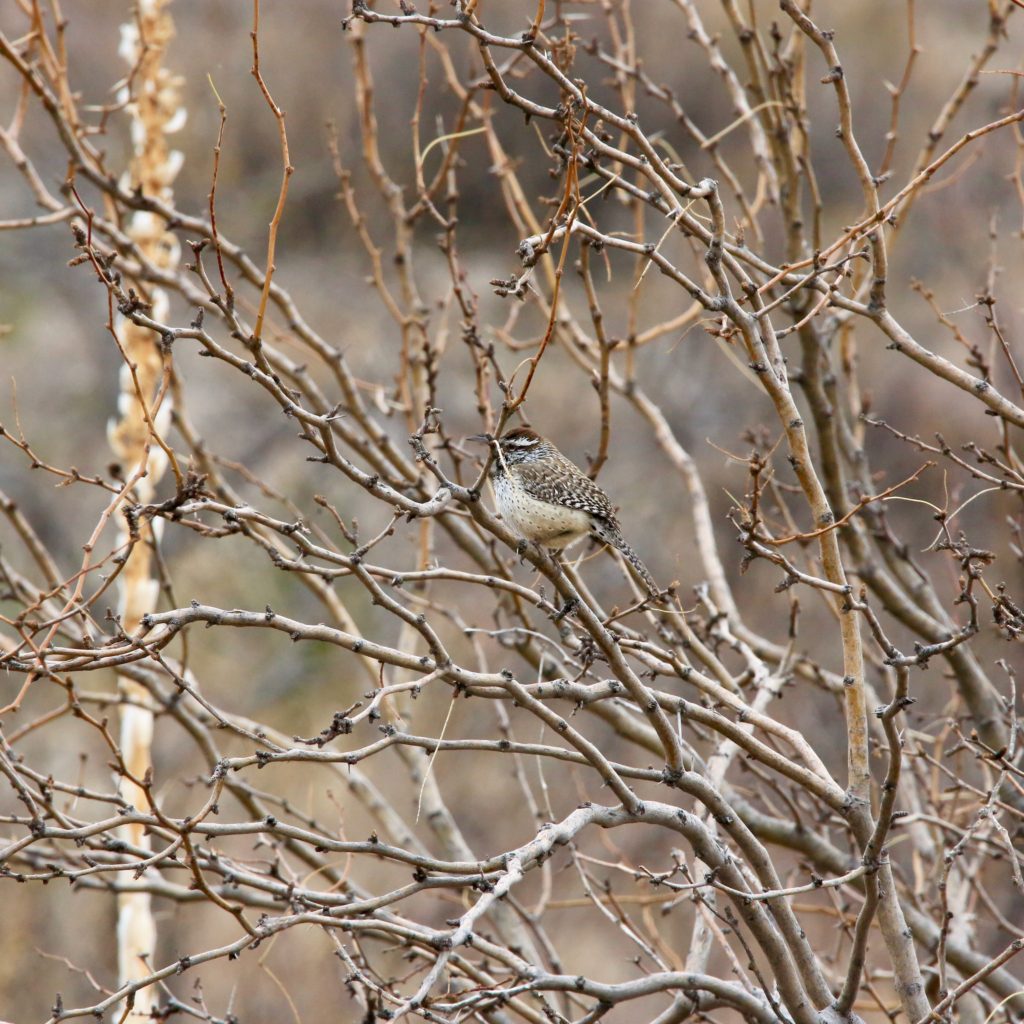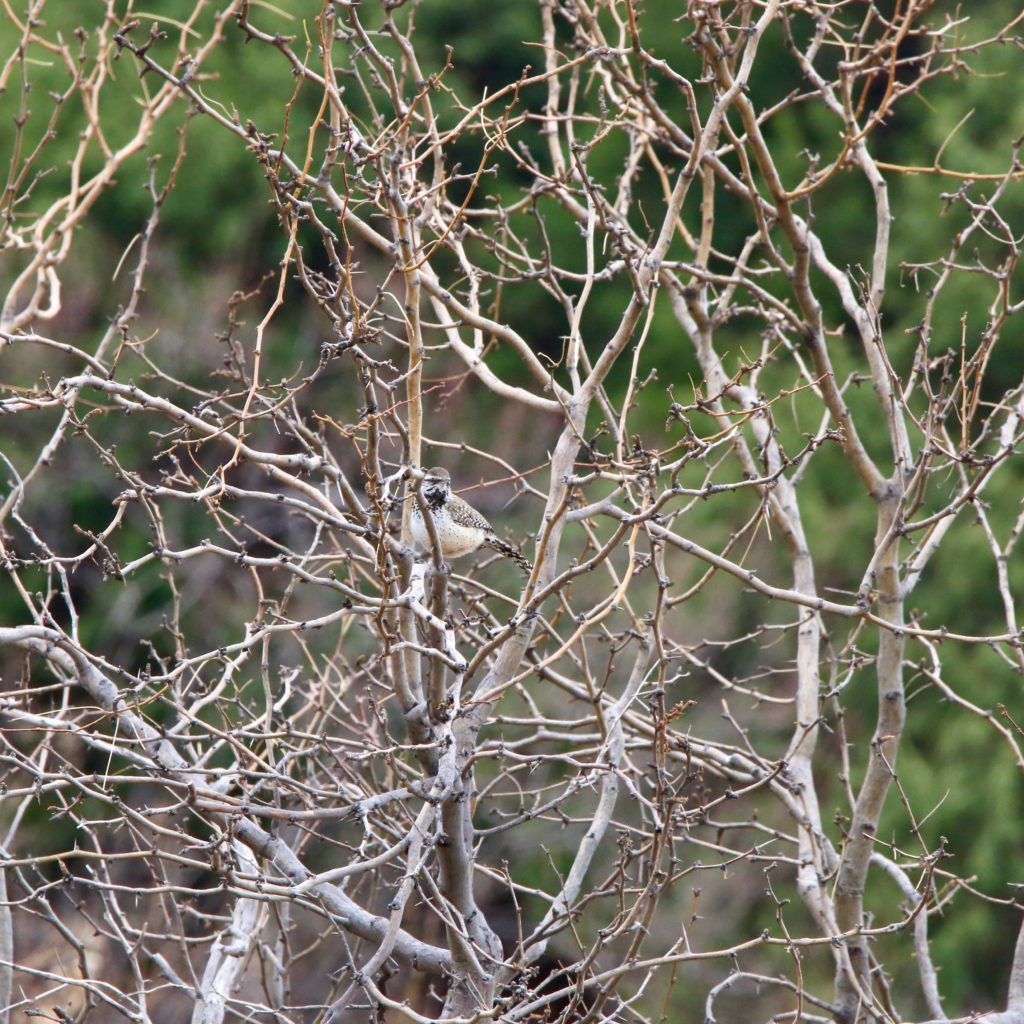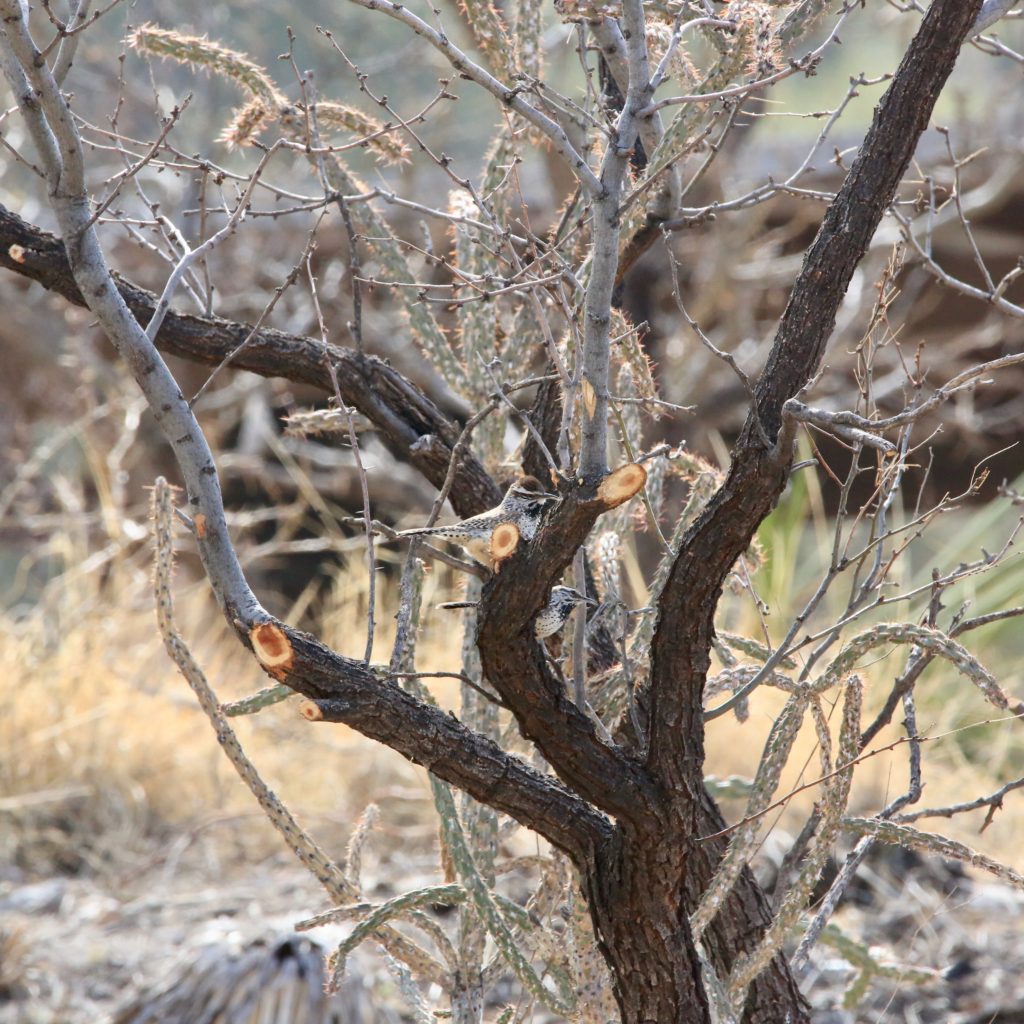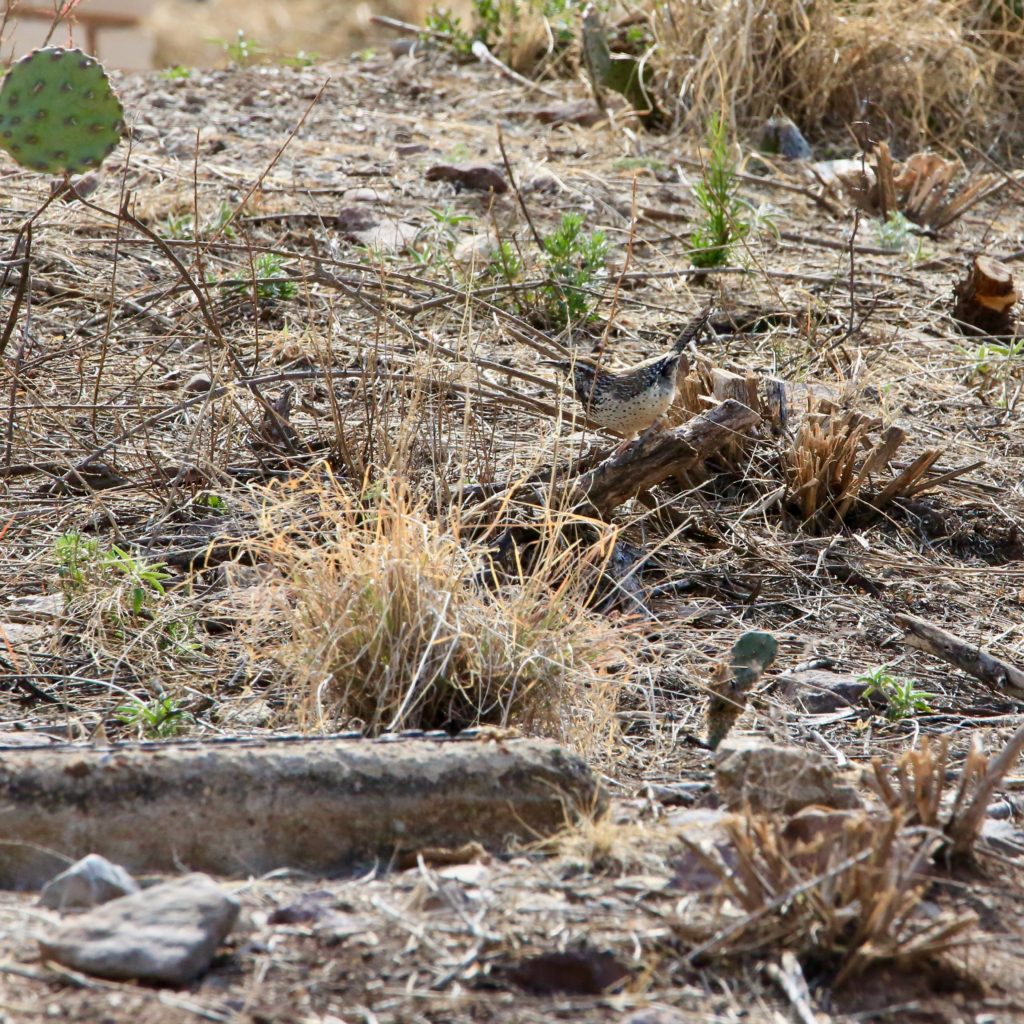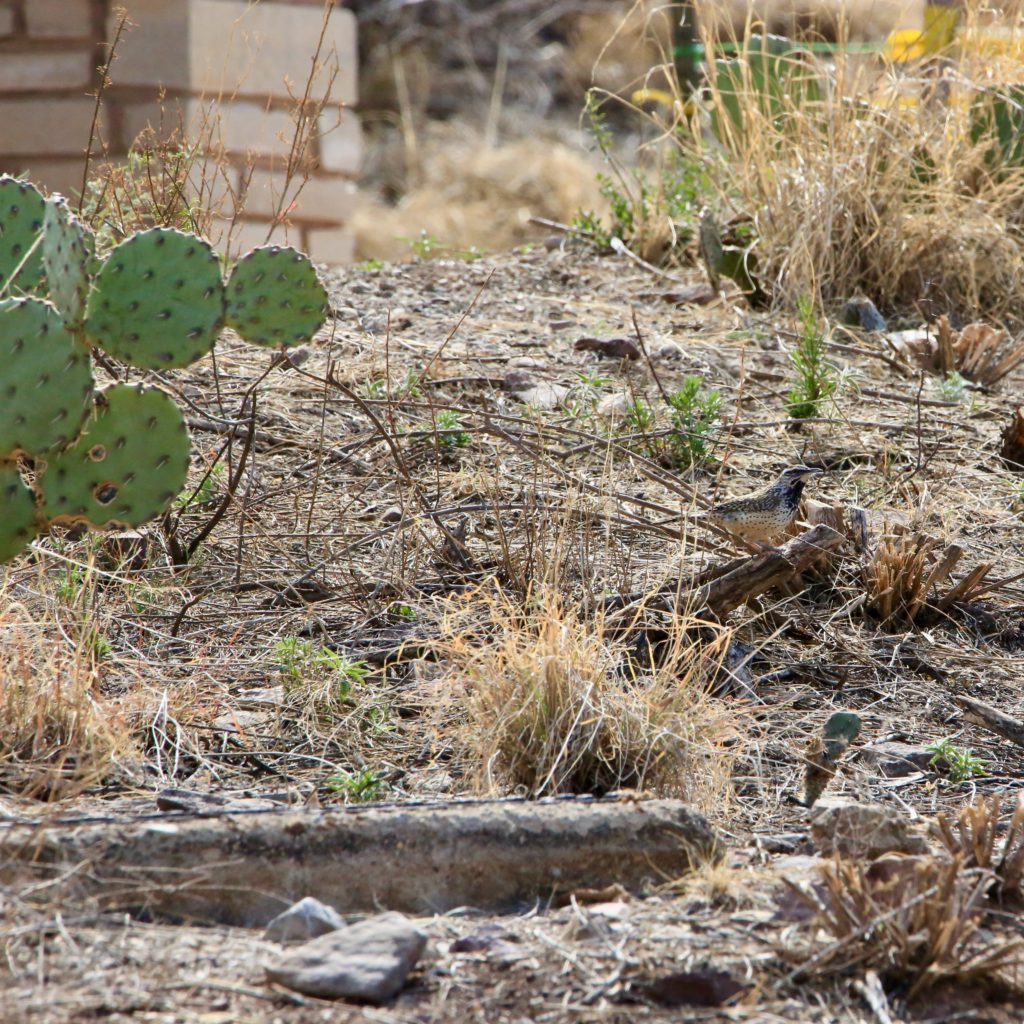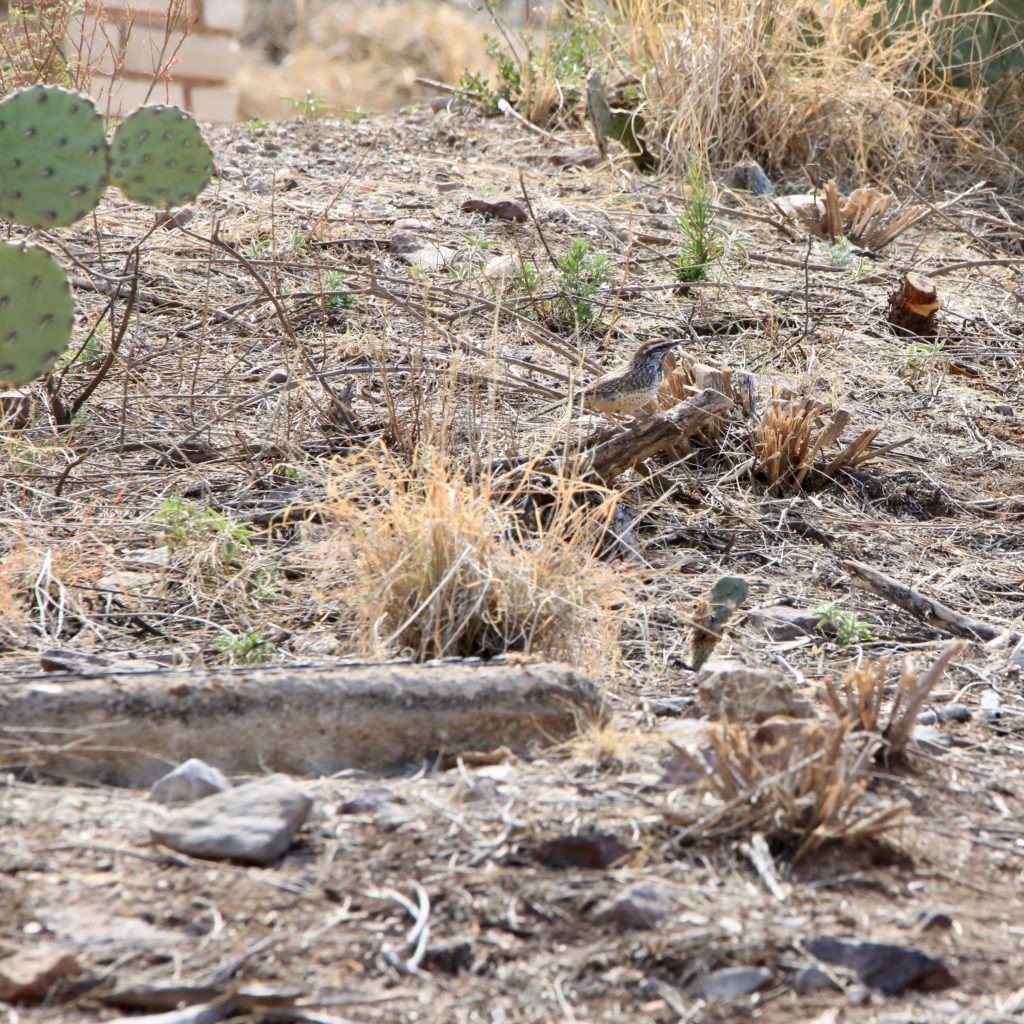
The Cactus Wren
A Cactus Wren is a fun bird to see while bird watching. Below are some tips to help you identify Cactus Wrens. We have also put together a list of fun Cactus Wren t-shirts, Cactus Wren bird patches, bird houses, bird feeders, binoculars, stickers, and other fun bird-watching items.
About Cactus Wrens
It is a noisy small bird gracing the southwestern deserts with its scratch noise sounds. Their nests are the shape of footballs which is their permanent residence. They build a number of nests using them for both the breeding and non-breeding season which is uncommon among most birds.
Description and Identification
Cactus Wrens are relatively large wrens with chunky, long bodies about 7 – 9 inches long. They have heavy bills and a long, rounded tail. Their short wings have a wingspan of 11 inches, which are also rounded in shape. They are speckled brown birds that have white eyebrows extending to the backs of their necks with white chests and pale brown sides that are speckled with dark colors. Their backs are a deeper brown speckled with white. They have relatively long tails which stand out with their black and white bars. There is very little sexual dimorphism in the species, but the juveniles are of lighter coloring with brown eyes instead of red.
Cactus Wren Color Pattern
It is a brown bird with white eyebrows, extending from the bill above the red eyes and towards the sides of the neck. The Cactus Wren have pale brown sides and white chests. Their back is brown with heavy white stripes and a black and white tail. Juveniles have brown eyes and paler feathers.
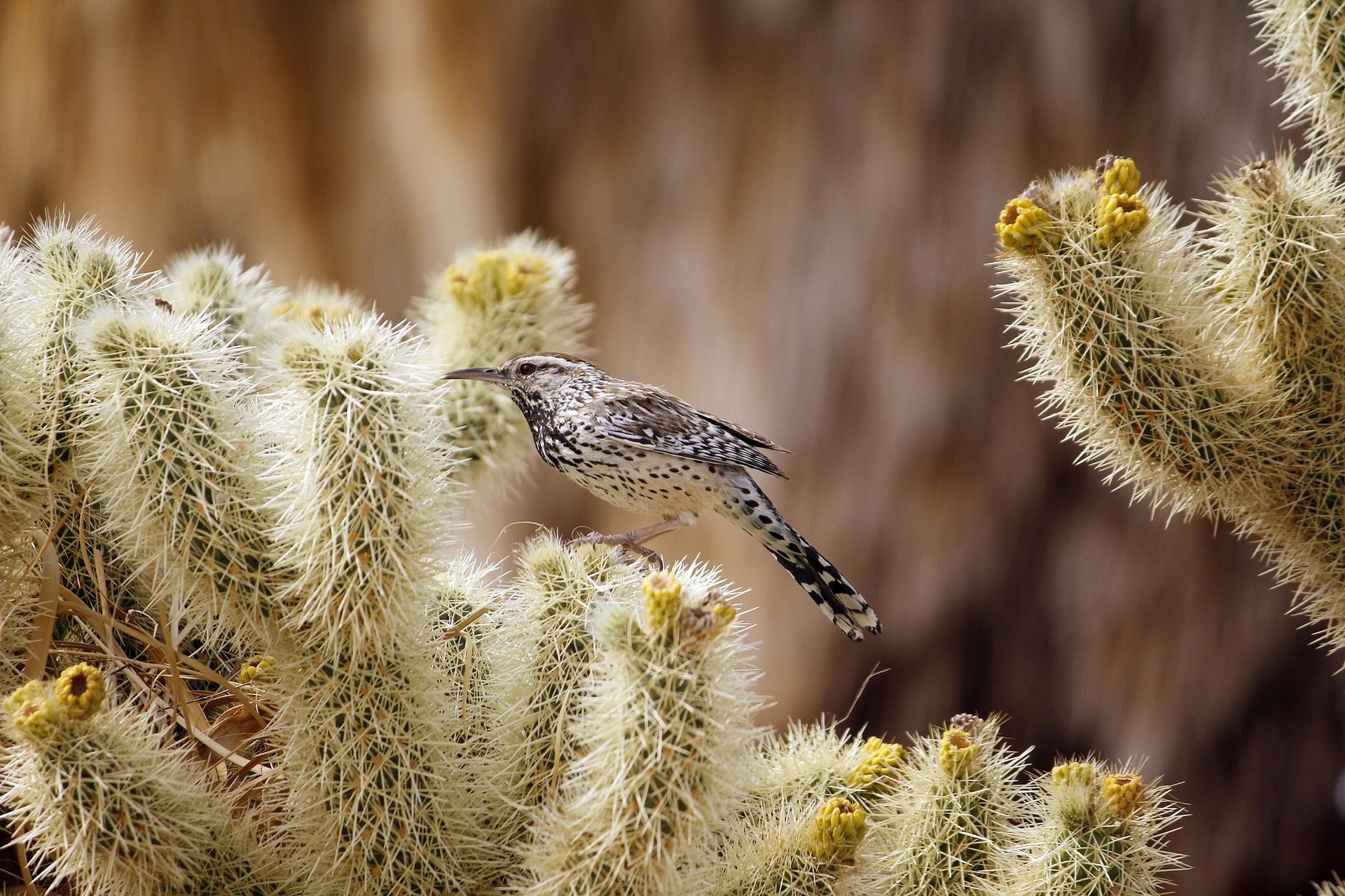
Cactus Wren Size
It has a long heavy bill and rounded wings. It is the largest of its species in the United States. Sexes are similar in size having measurements of:
- Length 18 – 22 cm
- Weight 32 – 47g
Cactus Wren Behavior
Cactus Wren hops around the ground in the open. They are most active during the day spending most of it foraging for grain and insects. Uncommon to most birds, the Cactus Wren uses its nest year round rather than breeding only. Pairs get together after making growling sounds with their wings and spreading their tails before finally pecking each other.
Cactus Wren Food
The main diet for these birds is insects. They mostly feed on spiders and other invertebrates
like grasshoppers, butterflies, ants, beetles, and wasps. They find their prey by hopping on
the ground and searching under leaves, tree barks, and other vegetation. They also eat
fruits, seeds, and nectar and tend to consume fairly large amounts of cactus fruit, which is an
important source of water for these wrens. Cactus Wrens rely on their food for water and do
not consume water separately, a useful trait in arid climates. Since they regularly feed on the
nectar of Saguaro Cactus blossoms, they regularly act as pollinators.
The main source of nutrition for the Cactus Wren is spiders and insects such as ants, wasps, and butterflies. They forage by hopping around the ground moving leaves and tree barks. They eat cactus fruits where they get a high percentage of their hydration.
Cactus Wren Habitat
These fearless birds are found in the arid and semi-arid regions of North America, relying on
the abundance of spiny cacti found in the areas. These birds rely on the lack of seasonal
change characteristic of those areas and establish permanent territories that they defend
aggressively. They live in a variety of dry and low habitats and are particularly numerous in
thorny shrubs and cacti. They are also found in coastal chaparral due to the presence of
similar vegetation. The main cacti they can be found inhabiting within are saguaro, cholla,
prickly-pear cacti, mesquite, yucca, and other desert shrubs. They can also be seen in urban
areas that host similar vegetation.
Cactus Wren lives in scrub areas, deserts, and coastal scrubs. Small patches of prickly cactus mixed with short wheat are great places to search for Cactus Wrens.
Range and Migration
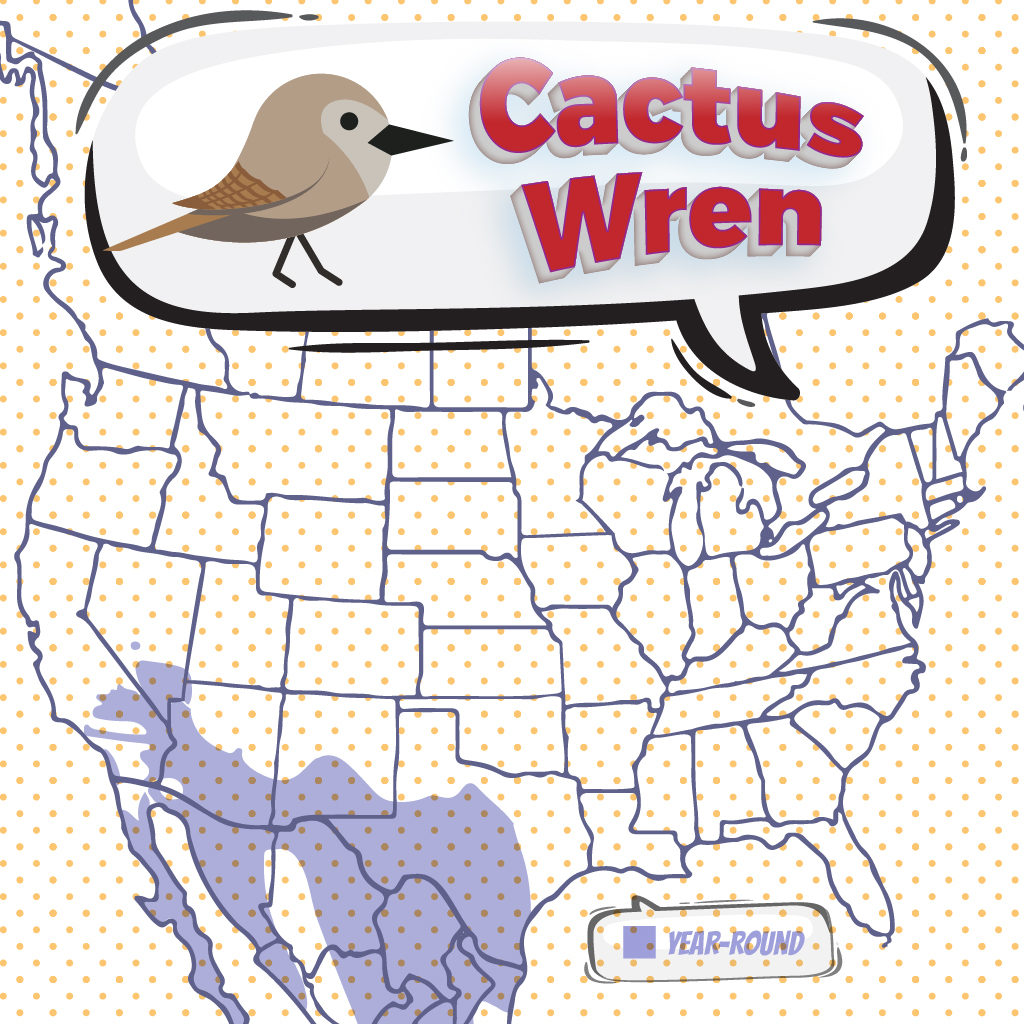
Cactus Wrens are small passerines found along the desert regions of the Southwestern United
States and north and central Mexico. They are the largest wren found in the United States
and are endemic to the regions that they reside in. These birds are remarkedly different from
other wrens as they tend to nest away from thickly vegetated areas and are far more
sociable. These birds do not migrate and can be found in the arid and semi-arid regions of
North America all year long.
Cactus Wren Lifecycle
Female Cactus Wrens initiate nest building but afterward the male umps in to help. The female lays 2 to 7 eggs per breeding season. She incubates them for 16 to 17 days, after which it takes 17 days to 23 days for the hatchlings to leave the nest.
Cactus Wren Nesting
The nest building is initiated by the female where she selects a spot. However, the process
of building the nest is done by both members of the pair 3 – 10 feet above the ground. Their
nests are large and football-shaped with a tunnel-like entrance. The nests are made of
coarse grass and plant fibers which are shaped to ensure extremely small entrances that
widen as the parents go deeper into the nest. This is primarily done to keep predators out
while ensuring a safe incubation and nestling space. There can be between 1 – 3 broods
each breeding season with each clutch of eggs ranging from 2 – 7 eggs. Barn Swallows
have also been found to use the nests built by Eastern Phoebes in multiple cases.
Ornithology
Bird Watching Academy & Camp Subscription Boxes
At Bird Watching Academy & Camp we help kids, youth, and adults get excited and involved in bird watching. We have several monthly subscription boxes that you can subscribe to. Our monthly subscription boxes help kids, youth, and adults learn about birds, bird watching, and bird conservation.
Bird Watching Binoculars for Identifying Cactus Wrens
The most common types of bird watching binoculars for viewing Cactus Wrens are 8×21 binoculars and 10×42 binoculars. Bird Watching Academy & Camp sells really nice 8×21 binoculars and 10×42 binoculars. You can view and purchase them here.
Cactus Wren T-shirts
If you love the Cactus Wren you should purchase a Bird Watching Academy & Camp T-shirt. To help support bird conservation we donate 10 percent to bird conservation activities.
Cactus Wren Iron On Patches
Kids, Youth, and Adults love to collect our Bird Watching Academy & Camp iron on patches. Our bird watching patches help you keep track of the birds you have seen an identified. You can also display the patches on our Bird Watching Academy & Camp banners.
The Cactus Wren is a great iron on patch to start your collection with. The patches are durable and can be sewn on or ironed on to just about anything.
Cactus Wren Stickers
Stickers are a great way for you to display your love for bird watching and the Cactus Wren. We sell a monthly subscription sticker pack. The sticker packs have 12 bird stickers. These sticker packs will help your kids learn new birds every month.
Bird Feeders For Cactus Wren
There are many types of bird feeders. Here are our favorite bird feeders for your backyard. We use all of these bird feeders currently. Kids will have a great time watching birds eat at these bird feeders. Using this collection of bird feeders will provide a wide variety and many types of birds.
Best Bird Houses for Cactus Wren
There are many types of bird houses. Building a bird house is always fun but can be frustrating. These 4 bird houses have become our favorites. Getting a bird house for kids to watch birds grow is always fun. We spent a little extra money on these bird houses but they have been worth the higher price and look great.


